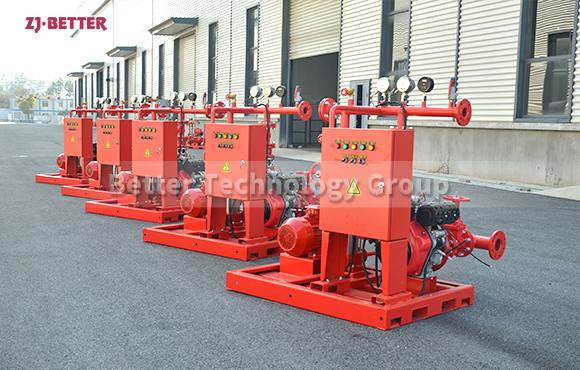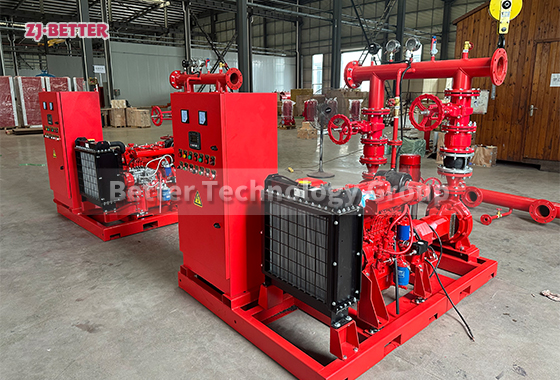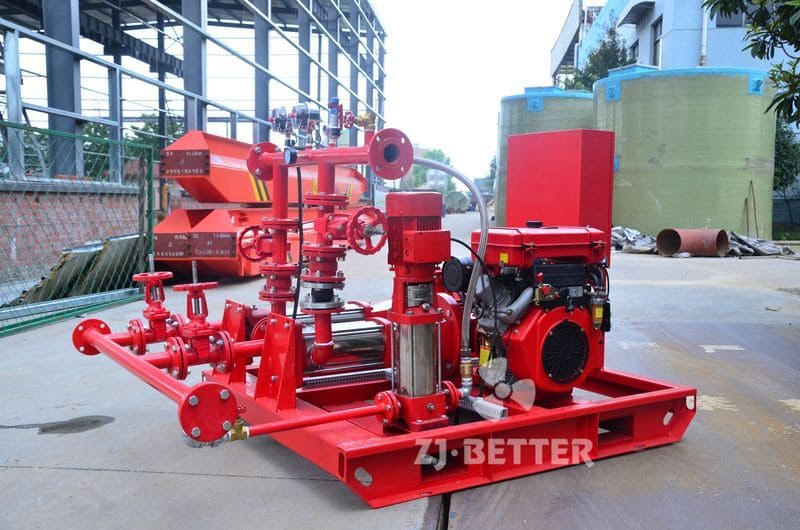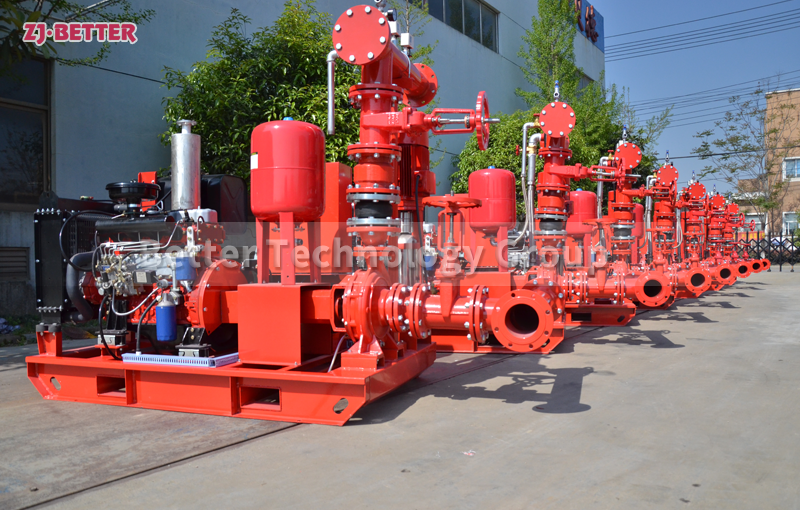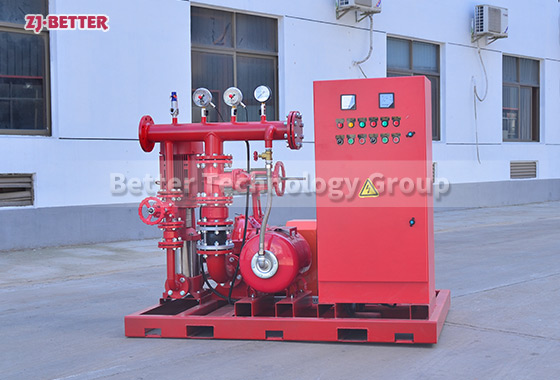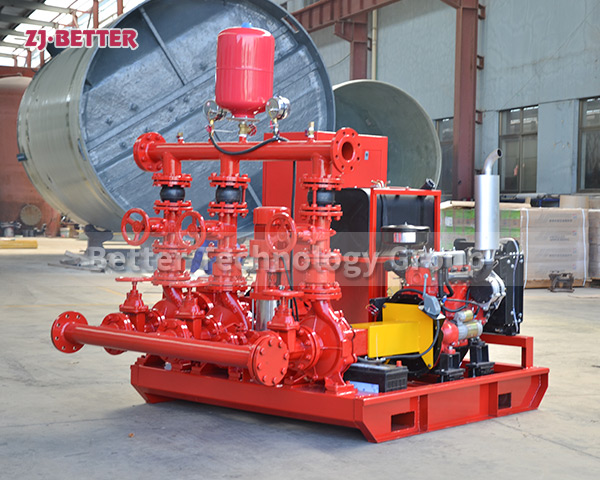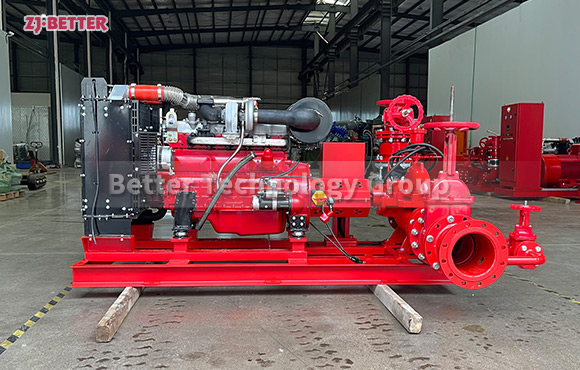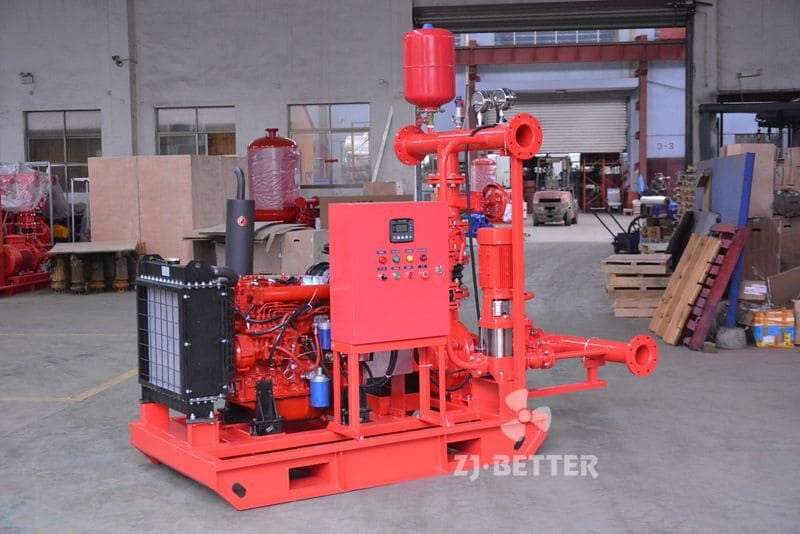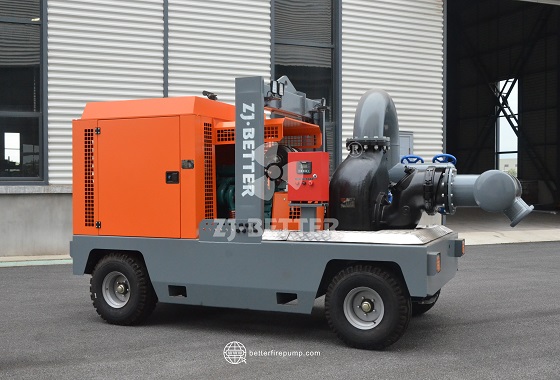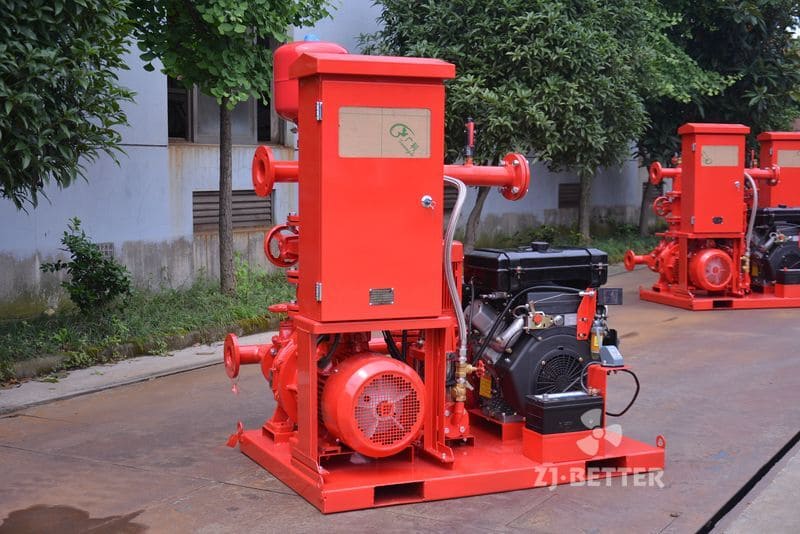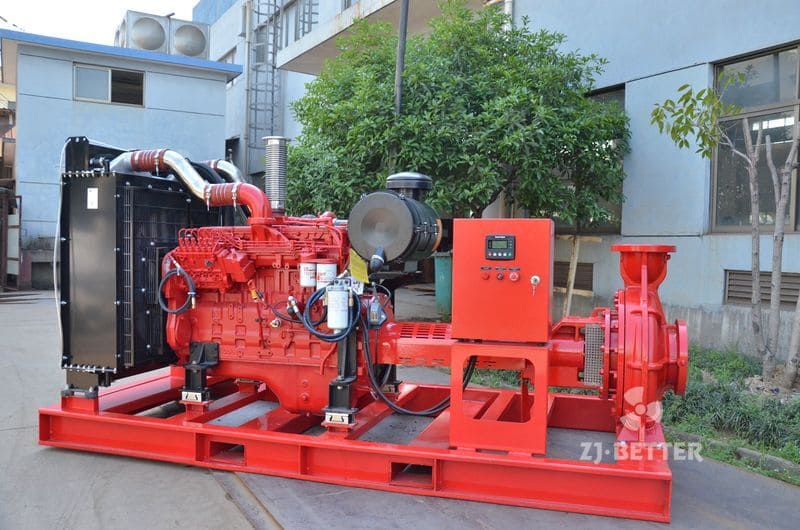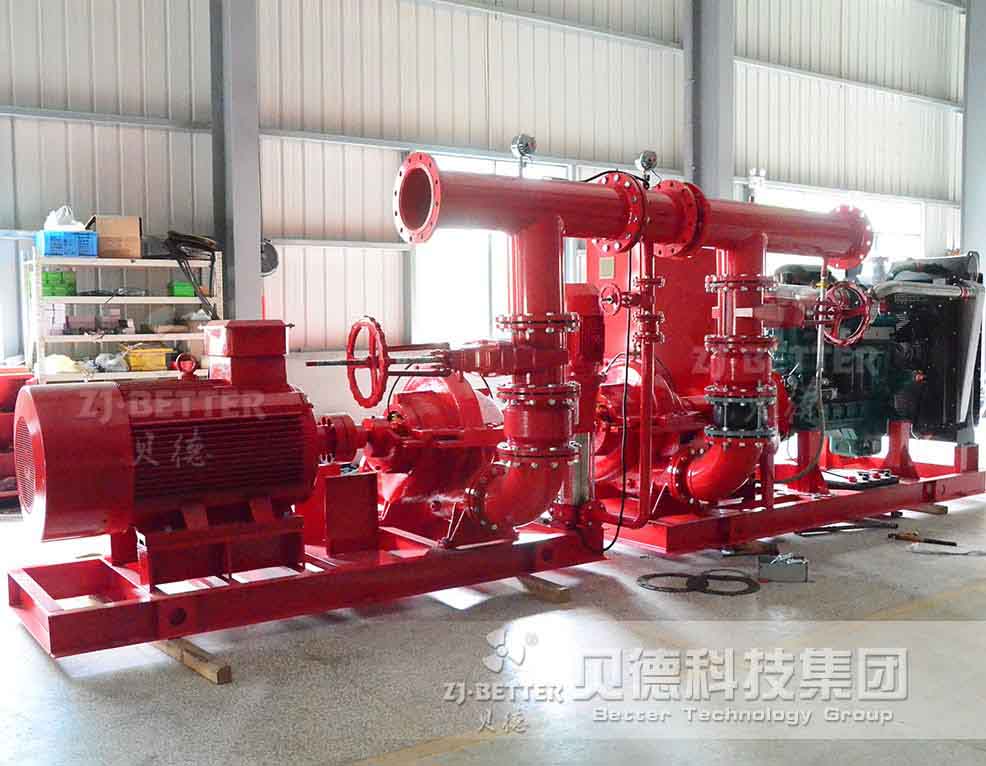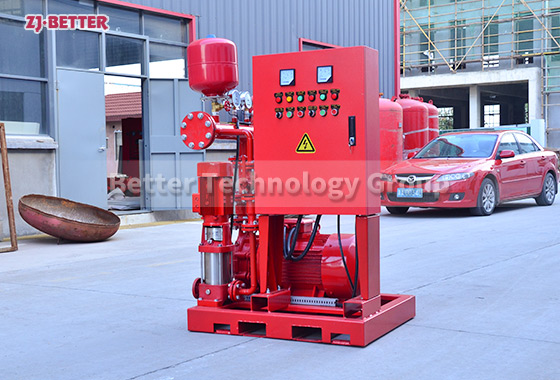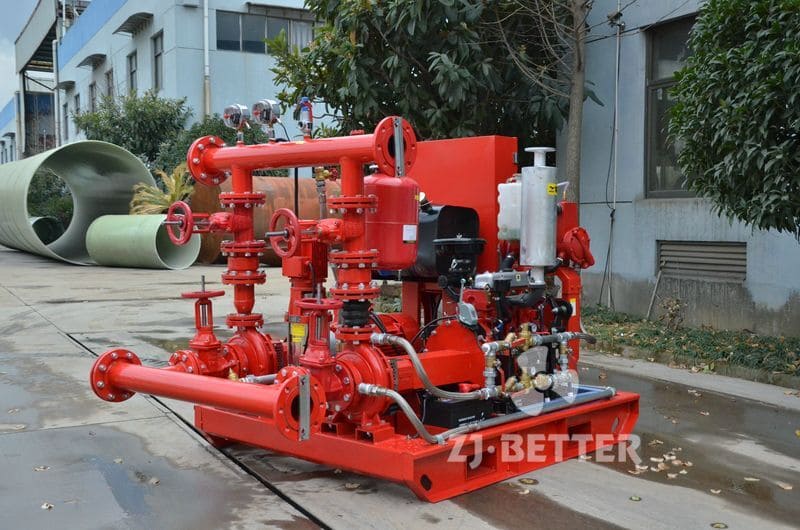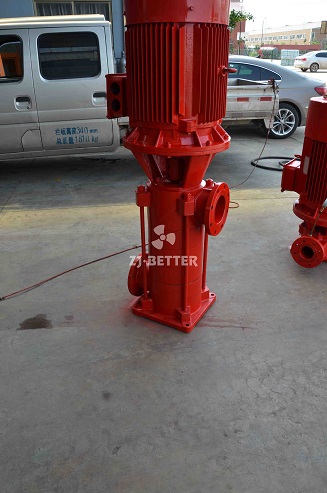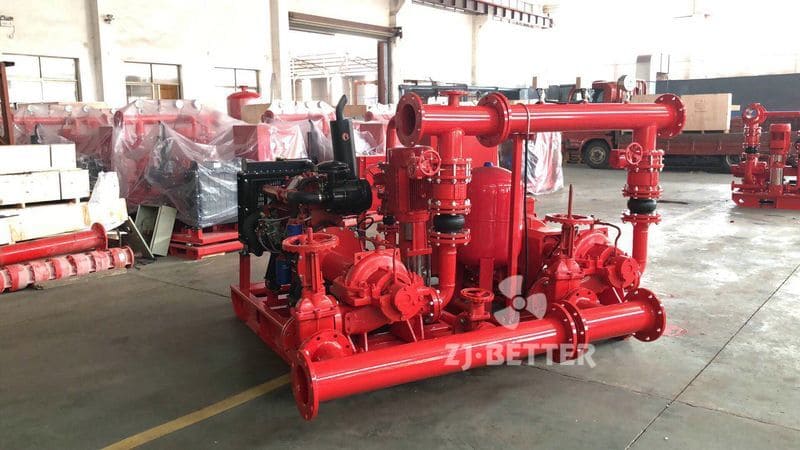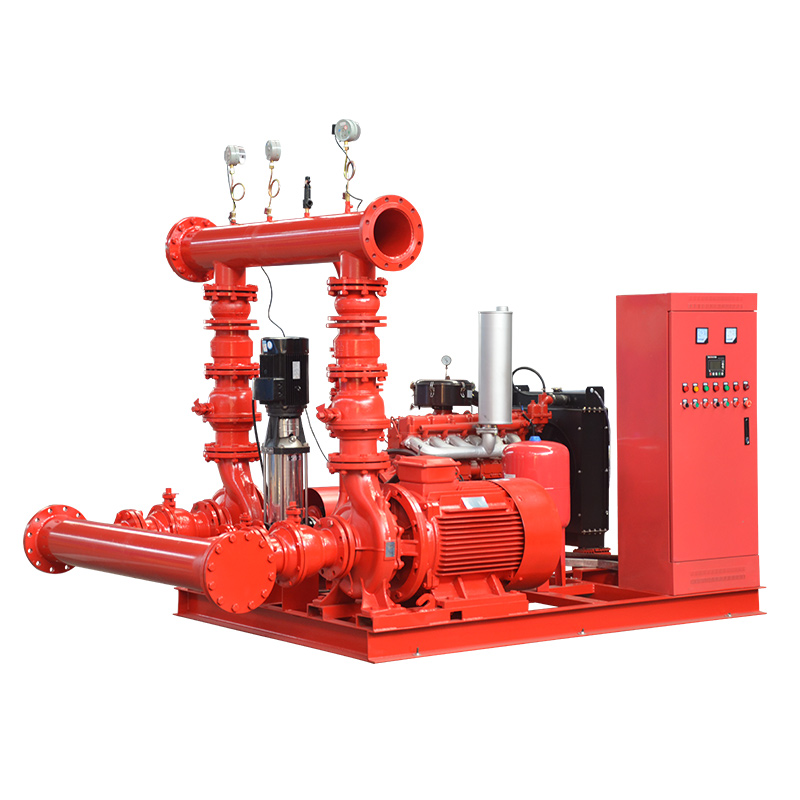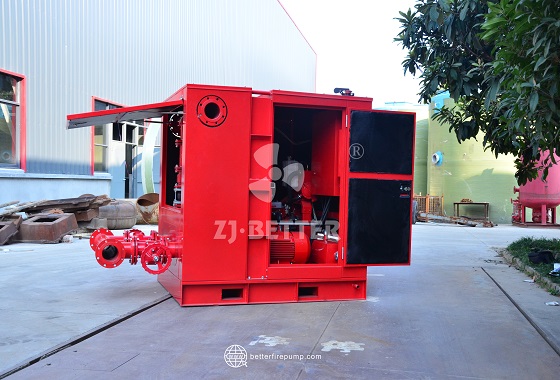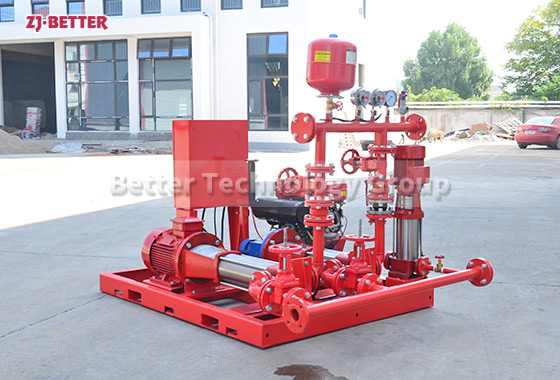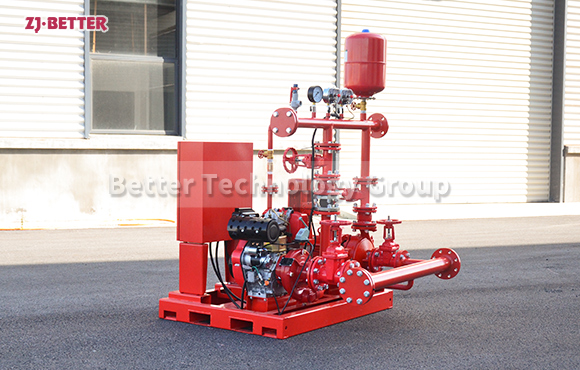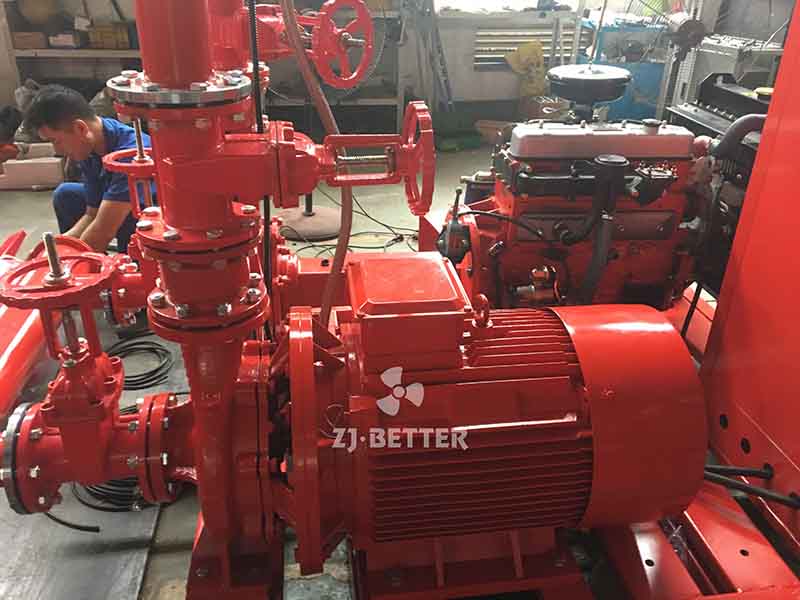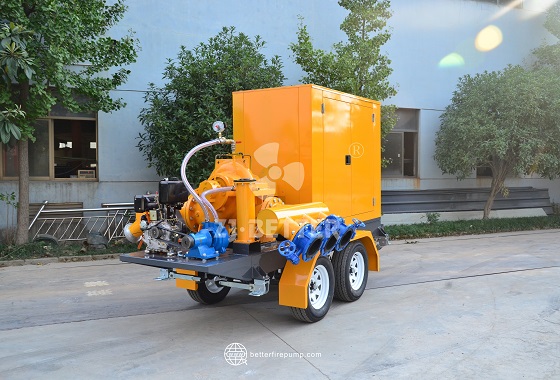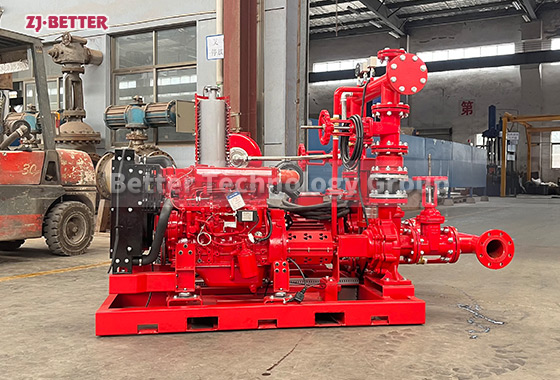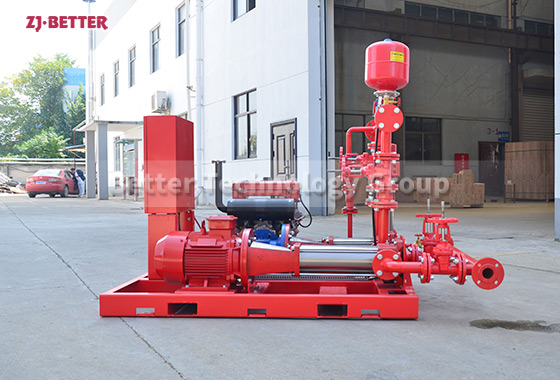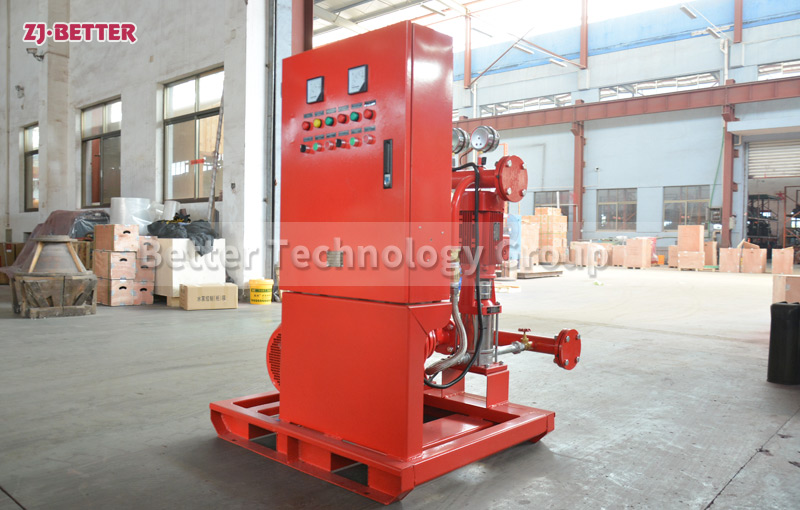How to improve the anti-cavitation performance of fire pump?
1. Increase the suction head: Increasing the suction head, or the vertical distance between the suction inlet and the centreline of the impeller, can reduce the chances of cavitation.
2. Increase the impeller speed: Increasing the impeller speed can also reduce the chance of cavitation.
3. Install an air separator: An air separator in the suction line can help remove any entrained air from the system, thus reducing the chance of cavitation.
4. Install a venturi: A venturi installed in the suction line can help create an area of low pressure, which can reduce the chance of cavitation.
5. Install a priming valve: A primer valve can help reduce the suction head and thus reduce the chance of cavitation.
6. Install a vacuum breaker: A vacuum breaker can be used to reduce the pressure in the suction line, thus reducing the chance of cavitation.
7. Improve the suction piping: Improving the suction piping, such as using larger pipes, can reduce the chance of cavitation.
8. Inspect the pump and suction line: Inspecting the pump and suction line for any signs of wear or damage can help reduce the chance of cavitation.
1. Increase the suction head: Increasing the suction head, or the vertical distance between the suction inlet and the centreline of the impeller, can reduce the chances of cavitation.
2. Increase the impeller speed: Increasing the impeller speed can also reduce the chance of cavitation.
3. Install an air separator: An air separator in the suction line can help remove any entrained air from the system, thus reducing the chance of cavitation.
4. Install a venturi: A venturi installed in the suction line can help create an area of low pressure, which can reduce the chance of cavitation.
5. Install a priming valve: A primer valve can help reduce the suction head and thus reduce the chance of cavitation.
6. Install a vacuum breaker: A vacuum breaker can be used to reduce the pressure in the suction line, thus reducing the chance of cavitation.
7. Improve the suction piping: Improving the suction piping, such as using larger pipes, can reduce the chance of cavitation.
8. Inspect the pump and suction line: Inspecting the pump and suction line for any signs of wear or damage can help reduce the chance of cavitation.


